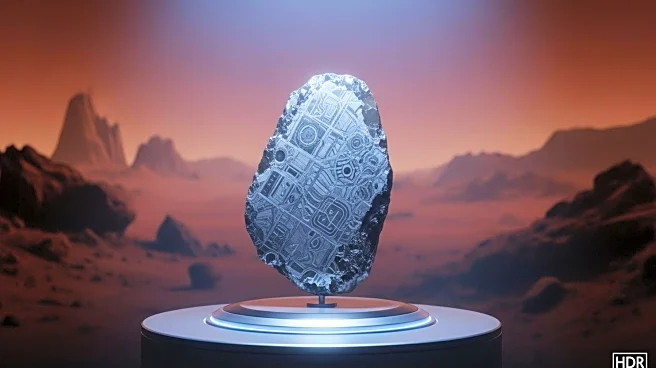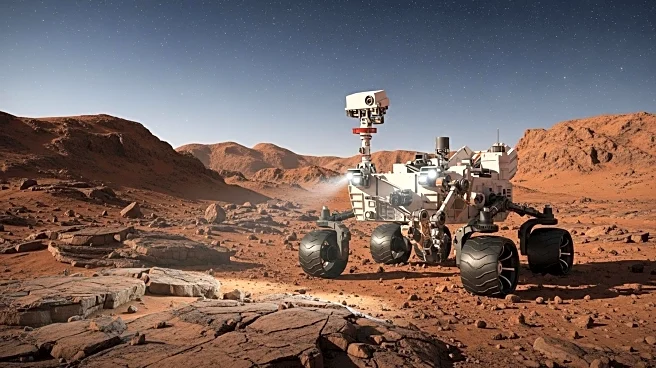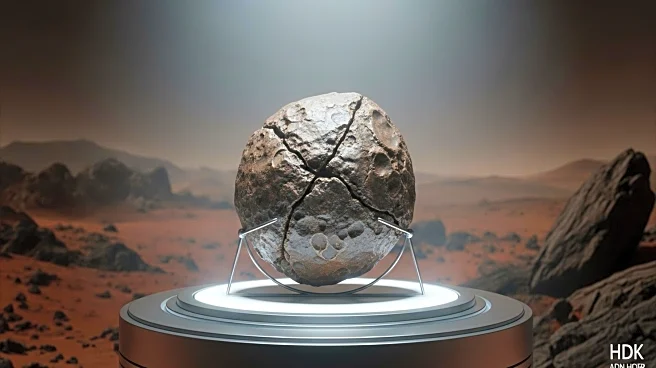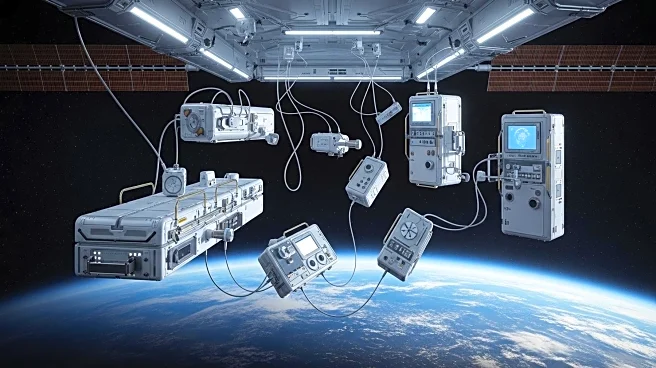What's Happening?
Researchers have identified several dense structures within Mars' mantle, believed to be remnants of ancient protoplanets. These findings were made possible through data collected by NASA's InSight lander, which monitored Marsquakes from 2018 to 2022. The study, published in the journal Science, reveals that these structures, measuring up to 2.5 miles across, have been preserved within Mars' immobile mantle for billions of years. The discovery provides unprecedented insight into the planet's interior, suggesting that Mars' mantle has evolved sluggishly over time, unlike Earth's active tectonic plates.
Why It's Important?
This discovery sheds light on the early solar system's dynamics and the formation of planets. Understanding Mars' mantle composition and its lack of tectonic activity offers valuable comparisons to Earth's geological processes. The findings could influence future planetary exploration and research, potentially aiding in the search for life or understanding planetary habitability. Scientists and researchers stand to gain deeper insights into planetary formation and evolution, impacting fields such as geology, astronomy, and space exploration.
What's Next?
Further analysis of the Marsquake data could reveal more about the planet's geological history and the potential for similar structures on other celestial bodies. Researchers may continue to explore Mars' mantle to understand its composition and the implications for planetary science. NASA and other space agencies might use these findings to inform future missions to Mars, focusing on its geological and potentially habitable aspects.
Beyond the Headlines
The discovery highlights the importance of planetary exploration in understanding our solar system's history. It raises questions about the preservation of geological features on planets without tectonic activity, offering a unique perspective on planetary evolution. The study also underscores the significance of technological advancements in space exploration, such as the InSight lander's ability to provide detailed data on Mars' interior.











